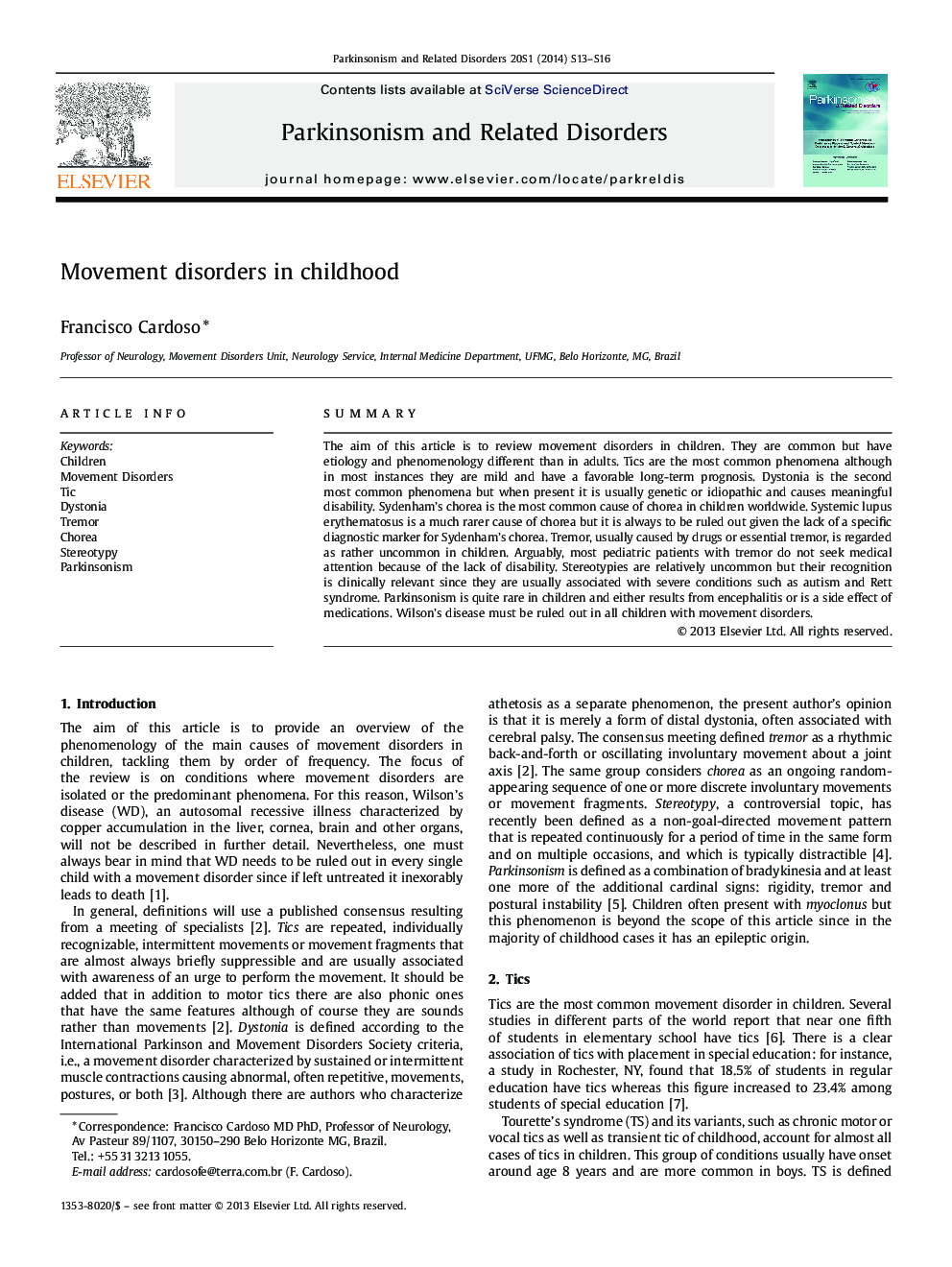| Article ID | Journal | Published Year | Pages | File Type |
|---|---|---|---|---|
| 1920583 | Parkinsonism & Related Disorders | 2014 | 4 Pages |
SummaryThe aim of this article is to review movement disorders in children. They are common but have etiology and phenomenology different than in adults. Tics are the most common phenomena although in most instances they are mild and have a favorable long-term prognosis. Dystonia is the second most common phenomena but when present it is usually genetic or idiopathic and causes meaningful disability. Sydenham's chorea is the most common cause of chorea in children worldwide. Systemic lupus erythematosus is a much rarer cause of chorea but it is always to be ruled out given the lack of a specific diagnostic marker for Sydenham's chorea. Tremor, usually caused by drugs or essential tremor, is regarded as rather uncommon in children. Arguably, most pediatric patients with tremor do not seek medical attention because of the lack of disability. Stereotypies are relatively uncommon but their recognition is clinically relevant since they are usually associated with severe conditions such as autism and Rett syndrome. Parkinsonism is quite rare in children and either results from encephalitis or is a side effect of medications. Wilson's disease must be ruled out in all children with movement disorders.
